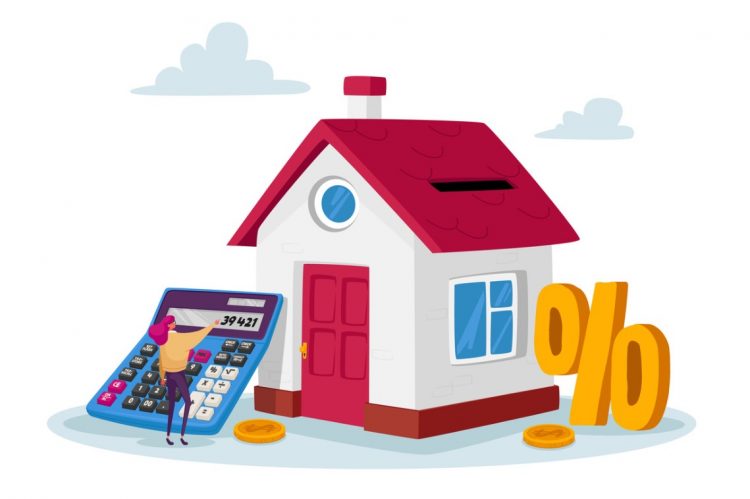July marked the first month-over-month decline in home sales since April, signaling that perhaps the peak of summer buying is beginning to taper, according to RE/MAX’s latest national housing report. Growth in the inventory of homes for sale inched up alongside modest increases in interest rates despite strong consumer demand.
RE/MAX’s report stated that July home sales declined 14.7% from June and 16.1% compared to a year ago. The decline was tied to a 9.0% drop in new listings month over month and represented 26.7% fewer new listings year over year across the 50 metro areas surveyed.
July inventory was up 3.1% from June, according to the report, even though it still lagged 20.8% from July 2022. Tight inventory amid consistent demand continued to prop up the median sales price of $425,000. This is a marginal decline of less than 1% compared to June, while registering a 1.2% upswing in comparison to July 2022.
With the average close-to-list price ratio in July at 100%, the report found that sellers were able to get their asking price from buyers. That was the average close-to-list ratio in June as well but was a decline from the 101% ratio recorded a year ago.
“The market is playing out like we expected it to, it’s bumpy,” said Nick Bailey, president and CEO of RE/MAX LLC. “The inventory situation is unique—we are seeing it differ across the country depending on what area, but demand for housing is still strong. As rates stabilize, consumers’ confidence should strengthen, helping boost market activity.”
Real estate agent Jeffrey Decatur of RE/MAX Capital in Latham, New York said it’s important to remember that real estate is hyper local. “The market continues to keep us on our toes. Inventory levels still pose a challenge in some areas while others are shifting and appreciating. Buyers are adjusting, too, and in some cases expanding search criteria or commute times to find more options. Working with an experienced professional who understands the nuances of the local market is the best way to navigate the ever-changing market.”
Highlights of the reports’ data are as follows:
New listings
- Of the 50 metro areas surveyed, the number of newly listed homes is down 9.0% compared to June, and down 26.7% compared to July 2022.
- The markets with the biggest decrease in year-over-year new listings percentage were Phoenix, Arizona at -59.3%, Las Vegas, Nevada at -45.8% and Providence, Rhode Island at -37.4%.
- Only one market had an increase in YoY new listings percentage, Kansas City, Missouri at +1.8%.
Closed transactions
- Of the 50 metro areas surveyed, the overall number of home sales is down 14.7% compared to June, and down 16.1% compared to July 2022.
- The markets with the biggest decrease in YoY sales percentage were Dover, Delaware at -34.9%, Providence, Rhode Island at -27.3%, and New York, New York at -24.4%.
- Only two markets had an increase in YoY sales percentage, Cincinnati, Ohio at +16.1% and Coeur d’Alene, Idaho at +12.7%.
Median sales price
- The median of all 50 metro area sales prices was $425,000, down 0.7% compared to June, and up 1.2% from July 2022.
- The markets with the biggest YoY decrease in median sales price were Phoenix, Arizona at -4.4%, San Antonio, Texas at -3.7%, and Las Vegas, Nevada at -3.4%.
- The markets with the biggest YoY increase in median sales price were Trenton, New Jersey at +14.1%, Bozeman, Montana at +9.2%, and Milwaukee, Wisconsin at +9%.
Close-to-list price ratio
- The average close-to-list price ratio of all 50 metro areas in the report was 100%, flat compared to June, and down from 101% compared to July 2022. The close-to-list price ratio is calculated by the average value of the sales price divided by the list price for each transaction (above 100% means the home closed for more, and less than 100% means the home sold for less)
- The metro areas with the lowest close-to-list price ratios were a tie between Bozeman, Montana and New Orleans, Louisiana at 97%. The highest close-to-list price ratios were a tie between Hartford, Connecticut and Trenton, New Jersey at 105%.
Days on market
- The average days on market for homes sold was 30, up 1 day compared to the average in June, and up 6 days from the average in July 2022.
- The metro areas with the lowest days on market were a tie between Baltimore, Maryland and Washington, D.C. at 11, followed by another tie between Dover, Delaware and Trenton, New Jersey at 12.
- The highest days on market averages were in Fayetteville, Arizona at 68, Coeur d’Alene, Idaho at 59, and San Antonio, Texas at 54.
Months’ supply of inventory
- The number of homes for sale in July was up 3.1% from June and down 20.8% from July 2022.
- Based on the rate of home sales in July 2023, the months’ supply of inventory was 1.5, up from 1.3 in June, and decreased compared to 1.6 in July 2022.
- The markets with the lowest months’ supply of inventory were a four-way tie between Charlotte, NC, Manchester, NH, Seattle, WA, and Trenton, NJ at 0.7.
- The markets with the highest months’ supply of inventory were San Antonio, TX at 3.5, Bozeman, MT at 3.4, and New Orleans, LA at 3.1.
For more information, visit https://www.remax.com/.












